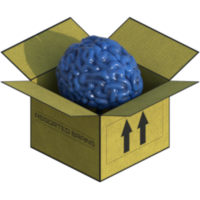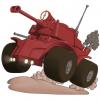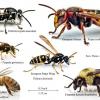Well part of the problem of using any camera sourced image as a texture is the challenge of de-lighting.
As you take a photo the light source (e.g. the flash or sun) casts shadows on the surface and those shadows in your texture interfere with the lighting effects used in the engine.
Not to even mention the fact that human skin in games engines tends to use a "subsurface scattering" model for its shading which means you have a subsurface colour (usually red, or dark pink) and a light scattering effect to emulate the texture of flesh. A photo wouldn't be able to emulate this well.
There are ways around both issues which are computationally or technically expensive as well as error prone, in the end it's cheaper and just as effective to have a talented artist paint the diffuse texture...
Not to mention that in Hi-Res models, a lot of the "texture" (pores, wrinkles) of skin is actually modelled and baked to normal maps, which, save using a a very high resolution 3D scanner for the base sculpt, cannot be easely captured from a photograph.
The remaining color information left is basically just different skin base color at different places (fatty and bony areas tend to have different shades, and so on), skin imperfection (freckles), and all the subsurface details (arteries, areas with more blood in them), but these need to go into a second texture in some cases (Depending on the shader used).
So you end up with a base color map with shades of more or less the same color plus skin imperfections, and a much reder subsurface map with some blue lines in it. The rest of the magic comes from the normal map, and clever shader tech.
Not saying it is not a lot of work, but splitting out an actual picture into this dual color information, removing noise and lighting as layed out by braindigitalis is actually often much more work, especially if the artist then also need to modify the resulting textures to fit the concepts of the character (scars the photographed model does not have, different skin tone, tattos, whatever).
The last point is this: if there is one thing where you will have zero tolerance for imperfections it is your human characters. As soon a you leave the area of totally cartoony graphics and enter semi-realistic or photo-realistic territory, you can still skimp on a lot of assets (your chairs not being exactly the right size? Textures not quite perfectly denoised for Terrain splats? Hardly anyone save some very rare players will ever notice)... you cannot skimp on your human characters. Humans are conditioned on recognizing other humans and especially facial expressions, so every error done there will be instantly evident to every of your players. Especially when it comes to faces, but also general body proportions and stuff like that.
Keyword is uncanny valley...
So even a slight imperfection in your characters skin texture might make him look unrealistic, which will be like 10x as bad as having a similar texture error in a vehicle or environmental texture.











